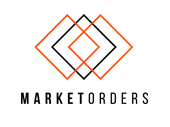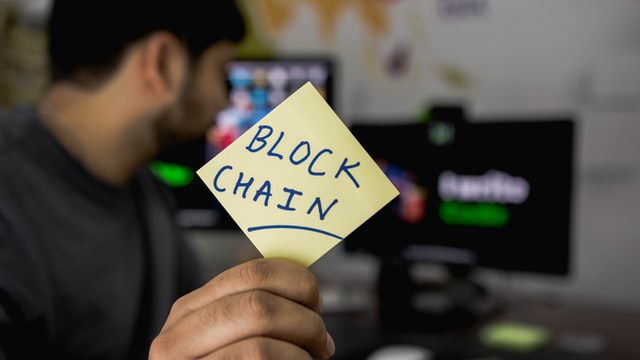You’ve always wondered what exactly is blockchain technology?
We, at MarketOrders, have answered burning questions about how it works and how you can use it to bring transparency and speed to the supply chain.
If you’d like more information about how MarketOrders is using blockchain and learn about some real-life case studies, download our White Paper here.
Let’s start at the very beginning:
What is blockchain?
At its most basic level blockchain is a chain of blocks, but in the context of digital information (the “block”) stored in a public database (the “chain”).
Blockchain is the core technology behind Bitcoin. At its heart, it is a distributed data store. Anyone who participates in the blockchain network can have access to all transactions that ever happened on the network (this is also known as the distributed ledger). Entries are stored within a cryptographic chain of blocks. At every stage, the network of participants must agree to the latest block of transactions. An agreement is reached through a process of majority consensus, eliminating duplicate entries, double spending etc. This process and the cryptographic layering of the blocks make the agreed blockchain irreversible and immutable. The ‘history’ of events within the blockchain cannot be modified by any one of the participants without majority consensus from the group.
What is a private blockchain?
Private (also known as permissioned and consortium) blockchains are deployed either within an organisation or shared between a known group of participants. Private blockchains can be limited to a predefined set of participants. In this case, no one else can access the blockchain or the data residing on the blockchain. These blockchains can be secured in a similar way to securing other integrated enterprise applications (e.g. firewalls, VPN etc).
Is blockchain technology too complicated to be implemented at a supply chain level?
Supply chains are complex because there are many moving parts and different actors or participants along the chain that perform separate and unique functions. The key is to get adoption and agreement from each participant to commit to using the blockchain as the one true ledger. Greater adoption can be sought via more information, education and communication to all parties involved. The MarketOrders white paper is a resource for educating participants on implementing blockchain at a supply chain level.
What if the blockchain contains incorrect or fraudulent data?
The data you get out is only as good as the data that is put in, so it is vital for accurate data to be entered into the blockchain in the first instance. If a data input is deemed incorrect then the consensus mechanism inherent within the blockchain would ‘vote’ the data as incorrect and reject it and not ‘add’ it to the next block of data.
How do you keep the supply chain secure?
A blockchain is a type of distributed decentralised ledger (DLT). In a DLT, data is stored on and replicated across a network of multiple different computers or nodes. The data can be accessed and added to by anyone in the network, but no one person or entity owns the data. In a supply chain DLT all members of the network, from the suppliers to the customs agents to the retailers, work from the same data and are able to read and write to this ledger.
A blockchain is a type of DLT which uses cryptography to record secure ‘blocks’ of data. The data is stored on a network which can be accessed by multiple parties who can view and read the data, as well as write new data or create new blocks which contain new information. This network of multiple editors feeding into the chain is known as a peer-to-peer network. This ‘chain’ of data stored in ‘blocks’ is secure because data can only be added and not removed. No one party can go back and change or tamper with the data, allowing every participant in the network to see the full history or journey of the data or product in question.
How will you keep sensitive or private information secure?
Digital signatures and cryptography seals ensure the security of sensitive or private data and information.
Blockchains are transparent – what if you don’t want this level of transparency especially for a business?
Transparency is always a benefit in terms of the supply chain as it will help to speed up the entire process for all participants involved.
With so much data on the blockchain won’t this cause storage issues?
Blockchain ledgers can grow very large over time. The Bitcoin blockchain currently requires around 200GB of storage. The current growth in blockchain size appears to be outstripping the growth in hard drives and the network risks losing nodes if the ledger becomes too large for individuals to download and store. At this point in time it could seem that there are potential storage issues. However, developers are constantly working on different ways to store data, such as smart ships as an alternative storage solution, as well as looking at how to limit the amount of key data that is stored. Cloud storage can also be used to store and access files and the blockchain, which is what Publica.com,
a blockchain based publishing start-up, does. They store book files in a cloud server where private keys are used to unlock access and show transactions relating to the book.
Why not just stick to a spreadsheet if the blockchain just records data – what’s the difference?
The main difference is that a spreadsheet still only has one owner who can effectively change the data. Data on the blockchain is published onto a public ledger and needs to go through a process, known as consensus mechanism, to ensure that each entry is valid.
This tech is energy intensive and uses too much electricity so why should we use it?
The cost of anything is always high when there is limited use. Economies of scale emerge when more people adopt and use the technology, and this is what we hope to see in the coming years. Developers are continually working on the blockchain to develop new ways and ideas of creating a more efficient blockchain and this will also come to fruition in the coming years.
We hope we’ve provided you with answers!
If you’d like to go further into blockchain technology and how it can revolutionise the jewellery industry, download our White Paper here.

